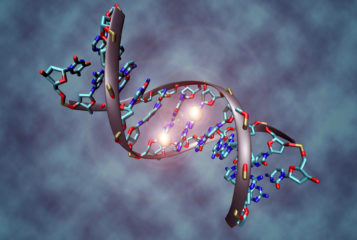The consequences of assisted reproductive technology (ART) are a matter of great concern, whether this is the development of the embryo, the perinatal health of the mother, or the ongoing health of the child.
The latter two issues were discussed in 'Growing Concern?', the final session of the Progress Educational Trust's conference, 'The Best Possible Start in Life: The Robust and Responsive Embryo'. This session was chaired by Professor Bobbie Farsides, of Brighton and Sussex Medical School.
At least five million children have been born from ART since 1978, and so it is crucial to assess any impacts the process has on health. Jane Denton, Director of the Multiple Births Foundation, started the session with a discussion of the risks of multiple births.
The chance of multiple pregnancies is substantially greater with ART than natural conception, largely because of the practice of transferring more than one embryo. Indeed, half of children born via ART are not the result of singleton pregnancies. Significant risks have been associated with multiple pregnancies to both the mother and babies, with mothers experiencing a higher risk of complications and maternal mortality, and babies more likely to be premature, of low birth weight and to die at an earlier age.
There have been initiatives to reduce the rate of multiple pregnancies from ART, most notably with elective single embryo transfer. Crucially, the increased utilisation of single embryo transfer has not affected the overall pregnancy rate from ART. However, while single embryo transfer is recommended, there is no national programme to implement it.
The Human Fertilisation and Embryology Authority (HFEA) set the maximum acceptable rate of multiple pregnancies in the UK each year, with the aim of reducing the overall rate from the current 20 percent to 10 percent. All IVF centres must have their own multiples birth minimisation strategy, but it was suggested that clinics should go further, a sentiment shared by Professor André van Steirteghem, of the University of Brussels.
Professor van Steirteghem suggested that the decision to use single embryo transfer should not be left to the discretion of younger mothers if they are at risk of multiple pregnancies. During the Q&A segment, Professors Alan Handyside and Peter Braude suggested that single embryo transfer should be extended to older mothers, as they face an increased mortality risk from multiple pregnancies, compared to younger mothers.
Denton highlighted that despite the rate of triplet births decreasing over recent years, the rate of twin births has increased. According to her, the public is now well aware of the risks of having triplets or higher order multiple pregnancies, but still seem largely unaware of the risks of twin pregnancies. There is still significant risk of having twins from single embryo transfers as even single blastocyst transfers can lead to twin pregnancies.
Denton suggested that learning more about how embryos divide and how the placenta forms would be helpful in managing and minimising multiple pregnancies. She explained that this is because many of the risks associated with multiple births stem from the sharing of placentas.
Professor van Steirteghem highlighted that ART children do well, and the health of the offspring is the most important parameter in judging the success of ART. However, he noted that research has found increased susceptibilities to a number of conditions such as cerebral palsy, congenital malformations and perinatal mortality, but stressed that these increases were small.
As the first children born from ART are now in their 30s, it is possible to begin long-term health assessment. Although there is limited funding for this type of research, Professor van Steirteghem asserted that fully assessing the impact of ART on the children born is particularly important.
The aim is to provide prospective parents with reliable data to facilitate their decision-making. Professor van Steirteghem specified that close attention should be paid to the fertility of male children from embryos that underwent ICSI). Furthermore, more detailed investigations into the previously reported increase in perinatal mortality in twins from pre-embryos that had undergone biopsies for PGD.
Professor Gudrun Moore, University College London, introduced the idea of epigenetics into the discussion of the health of ART children. Epigenetics is a heritable change in gene expression that does not affect the underlying DNA code. Some of the most common epigenetic modifications are the addition of chemical groups to DNA, in a process called imprinting. This is of particular relevance to ART as these groups are removed and added during the culture period.
Professor Moore noted that the incidence of some imprinting defect diseases, such as Prader-Willi and Beckwith-Wiedemann Syndromes, were all slightly higher in ART children than naturally conceived children. However, it should be stressed that these conditions are all very rare.
While Professor Moore focused on diseases caused by impriniting defects, it was noted in the discussion that epigenetic changes occurring during ART could have a more subtle effect, with the potential to cause later onset disorders. Again, it was suggested that better follow-up analyses of low frequency diseases and improved links to data registers were required.
Professor Lynn Fraser of King's College, London, suggested that the extent of epigenetic changes could depend on how long the embryos are cultured for. As transfer at the blastocyst stage now accounts for almost a quarter of all embryo transfers, it may be necessary to separate ART children into groups depending on how long the embryos were cultured.
'Growing concern?' proved to be an interesting session, highlighting the fact that there are still some inherent risks when having ART. It appears that minimising multiple pregnancies would go some way to reducing the most common risks. However, I was left with the clear impression that more research is required to fully understand whether ART is causing significant health problems to children and what the mechanism for this is.
PET is grateful to the conference's gold sponsors, Merck Serono.






Leave a Reply
You must be logged in to post a comment.